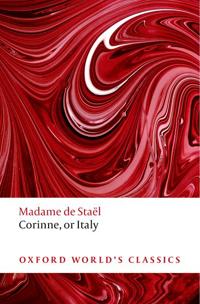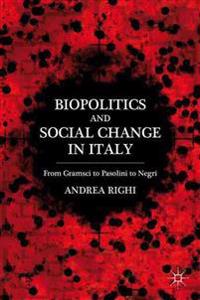Power and Purity: Cathar Heresy in Medieval Italy (Inbunden)
avCarol Lansing
ISBN: 9780195063912 - UTGIVEN: 1997-11-01Power and Purity: Cathar Heresy in Medieval Italy (Pocket)
avCarol Lansing
ISBN: 9780195149807 - UTGIVEN: 2001-10-01The Music Room in Early Modern France and Italy (Inbunden)
ISBN: 9780197265055 - UTGIVEN: 2012-06This interdisciplinary book investigates the use of secular space for music making in Early Modern France and Italy. The fact that many artists of the time also had musical skills underlines the close relationship between music and the visual arts. This era is remarkable for the growing importance[...]
Landscapes and Cities: Rural Settlement and Civic Transformation in Early Imperial Italy (Inbunden)
avJohn R. Patterson
ISBN: 9780198140887 - UTGIVEN: 2006-10-19Italy in the Renaissance 1300-1550
ISBN: 9780198700401 - UTGIVEN: 2005-01"The twelve essays in this volume present an introduction to Italian Renaissance society, intellectual history, and politics"--Provided by publisher.[...]
Early Modern Italy, 1550-1796
ISBN: 9780198700425 - UTGIVEN: 2002-06A historical account of the early modern Italian states on their own terms. This volume traces material and cultural bonds of identity and solidarity beyond their common political narrative - from the Reformation through the reform, renewal and restructuring to the collapse of the Old Regime.[...]
Italy in the Early Middle Ages (Häftad)
ISBN: 9780198700487 - UTGIVEN: 200204Recent archaeological findings have been fully integrated into the 11 thematic chapters, which provide an overview of the Italian peninsula in the early middle ages. The chapters consider such themes as regional diversities, rural and urban landscapes, and public and private power.[...]
Modern Italy
ISBN: 9780198726517 - UTGIVEN: 2017-01The history of modern Italy is characterized by recurrent cultural and political projects of modernity, rejuvenation, and regeneration; projects which often had their roots in a widespread dissatisfaction with social and political reality, and perceived moral corruption. The Risorgimento, the moveme[...]
Italy in the 19th Century, 1796-1900
ISBN: 9780198731276 - UTGIVEN: 2001-01This series, in seven volumes, offers a complete history of Italy from the early Middle Ages to the 21st century and, in each period, presents recent historical perspectives on Italian history. This volume covers the period from the French Revolution to the end of the 19th century.[...]
Italy Since 1945
ISBN: 9780198731696 - UTGIVEN: 2000-11The Short Oxford History of Italy series, in seven volumes, will offer a complete History of Italy from the early middle ages to the present and, in each period, will present the most recent historical perspectives on Italian history. This means setting Italian history in the broader context of Euro[...]
Artistic Theory in Italy, 1450-1600 (Storpocket)
avAnthony Blunt
ISBN: 9780198810506 - UTGIVEN: 196303This book seeks to broaden the comprehension of the student of Italian Renaissance painting by concentrating not on the works of art themselves, but on the various artistic theories which influenced them or were expressed by them. Taking Alberti's treatises as his starting-point, Anthony Blunt trace[...]
The Sacred Home in Renaissance Italy
ISBN: 9780198816553 - UTGIVEN: 2018-09The Sacred Home in Renaissance Italy explores the rich devotional life of the Italian household between 1450 and 1600. Rejecting the enduring stereotype of the Renaissance as a secular age, this interdisciplinary study reveals the home to have been an important site of spiritual revitalization. Book[...]
Ancient Umbria: State, Culture and Identity in Central Italy from the Iron Age to the Augustan Era (Inbunden)
avGuy Bradley
ISBN: 9780199245147 - UTGIVEN: 2000-12-21Malaria and Rome: A History of Malaria in Ancient Italy (Inbunden)
avRobert Sallares
ISBN: 9780199248506 - UTGIVEN: 2002-09-05Political Institutions in Italy (Häftad)
avMaurizio Cotta, Luca Verzichelli
ISBN: 9780199284702 - UTGIVEN: 200703The book focuses on the most recent developments in Italian politics, particularly those of the last 10-15 years. A longer historical perspective, covering the post-war period, is also supplied, providing the reader with the tools for understanding this period of change. The authors address a number[...]
Corinne, Or Italy (Pocket)
avMadame De Stael, Sylvia Raphael, John Isbell
ISBN: 9780199554607 - UTGIVEN: 200905'Look at her, she is the image of our beautiful Italy.' Corinne, or Italy (1807) is both the story of a love affair between Oswald, Lord Nelvil and a beautiful poetess, and an homage to the landscape, literature and art of Italy. On arriving in Italy, Oswald immediately falls under Corinne's magica[...]
Healthy Living in Late Renaissance Italy (Inbunden)
avSandra Cavallo, Tessa Storey, Sandra Cavallo
ISBN: 9780199678136 - UTGIVEN: 2014-01Healthy Living in Late Renaissance Italy explores in detail the efforts made by men and women in late Renaissance Italy to stay healthy and prolong their lives. Drawing on a wide variety of sources - ranging from cheap healthy living guides in the vernacular to personal letters, conduct literature, [...]
Fascist Voices: An Intimate History of Mussolini's Italy (Inbunden)
avChristopher Duggan
ISBN: 9780199730780 - UTGIVEN: 2013-07Today Mussolini is remembered as a hated dictator who, along with Hitler and Stalin, ushered in an era of totalitarian repression unsurpassed in human history. But how was he viewed by ordinary Italians during his lifetime?
In Fascist Voices, Christopher Duggan draws on thousands of letters sen[...]A History of Modern Italy: Transformation and Continuity, 1796 to the Present (häftad)
ISBN: 9780199982578 - UTGIVEN: 2018-06A History of Modern Italy addresses the question of how Italy's modern history--from its prolonged process of nation-building in the nineteenth century to the crises of the last two decades--has produced a paradoxical blend of hyper-modernity and traditionalism that sets the country apart in the bro[...]
Food of Italy (Inbunden)
avClaudia Roden
ISBN: 9780224096010 - UTGIVEN: 2014-03Includes recipes such as glorious tomato and aubergine dishes of Sicily; the classically Roman dishes like salty meat and fried vegetables, and rich Tuscan stews and soups, and so on. This title includes recipe photos as well as local Italy scenes.[...]
The Origins of the State in Italy, 1300-1600 (Häftad)
avJulius Kirshner
ISBN: 9780226437705 - UTGIVEN: 1996-09This text represents some of the foremost in American, British, and Italian scholarship and offers a critical overview of the key problems of the emergence of the state in Europe. Some of the topics covered include the political legitimacy of the aborning regional states, the changing legal culture,[...]
Women, Family and Ritual in Renaissance Italy
ISBN: 9780226439266 - UTGIVEN: 1987-06Christiane Klapisch-Zuber, a brilliant historian of the Annales school, skillfully uncovers the lives of ordinary Italians of the fourteenth and fifteenth centuries, Tuscans in particular, young and old, rich, middle-class, and poor. From the extraordinarily detailed records kept by Florentine tax c[...]
Biopolitics and Social Change in Italy (Inbunden)
avAndrea Righi
ISBN: 9780230115033 - UTGIVEN: 2011-09The study of how life can be controlled, supported, and manipulated has become the most urgent scientific and political task of our society. Each discipline approaches this biopolitical dimension with its tools and agenda; however they ignore how labor over time has materially produced crucial trans[...]
Italy's Divided Memory (Pocket)
avJohn Foot
ISBN: 9780230120495 - UTGIVEN: 2011-09In this groundbreaking study, John Foot argues that contemporary Italian history has been marked by a tendency towards divided memory. Events have been interpreted in contrasting ways, and the facts themselves often contested. Moreover, with so little agreement over what happened, and why it happene[...]
Agents of Witchcraft in Early Modern Italy and Denmark
ISBN: 9780230300712 - UTGIVEN: 2015-05This book offers a comparison of lay and inquisitorial witchcraft prosecutions. In most of the early modern period, witchcraft jurisdiction in Italy rested with the Roman Inquisition, whereas in Denmark only the secular courts raised trials. Kallestrup explores the narratives of witchcraft as they w[...]



























